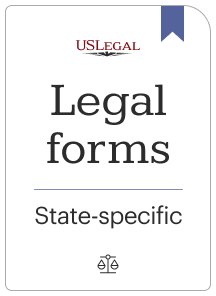

Affidavit of Death of Joint Tenant Title: Understanding the Colorado Affidavit of Death of Joint Tenant: A Comprehensive Guide Introduction: The Colorado Affidavit of Death of Joint Tenant is a legal document used to facilitate the transfer of real estate ownership when one of the joint tenants passes away. This affidavit acts as proof of the deceased joint tenant's passing, allowing the surviving joint tenant(s) to assert their sole ownership rights over the property. In this article, we will delve into the intricacies of the Colorado Affidavit of Death of Joint Tenant, discussing its purpose, requirements, process, and potential variations. Key Points: 1. Purpose of the Colorado Affidavit of Death of Joint Tenant: — To establish the death of a joint tenant and record the necessary information for title transfer. — To enable the surviving joint tenant(s) to assume sole ownership of the property. — To avoid lengthy probate procedures by bypassing the need for court involvement. 2. Requirements for Filing the Colorado Affidavit of Death of Joint Tenant: — Clear identification of the deceased joint tenant and their relationship to the surviving joint tenant(s). — Accurate property description, including the legal description, physical address, and county. — Notarization of the affidavit to ensure its validity. 3. Process of Filing the Colorado Affidavit of Death of Joint Tenant: — Obtain a copy of the affidavit form from the county clerk and recorder's office or their website. — Complete the affidavit form, including the required information. — Sign the affidavit in the presence of a notary public. — Submit the notarized affidavit to the county clerk and recorder's office along with any required fees. — Update property records with the county clerk and recorder to reflect the change in ownership. 4. Types of Colorado Affidavit of Death of Joint Tenant: — Basic Affidavit: The standard form used to transfer ownership when a joint tenant dies, typically requiring information about the deceased and surviving joint tenant(s). — Enhanced Life Estate Deed Affidavit (Lady Bird Deed): A more complex version of the affidavit that allows the property to pass directly to the surviving joint tenant(s) while retaining control over the property during the deceased joint tenant's lifetime. Conclusion: The Colorado Affidavit of Death of Joint Tenant is a vital legal document that expedites the transfer of property ownership after the death of a joint tenant. Whether it be the standard affidavit or an enhanced version like the Lady Bird Deed, understanding the requirements and process associated with this affidavit is crucial. By adhering to the prescribed procedures and providing accurate information, individuals can ensure a smooth transition of property rights while minimizing legal complications.
Title: Understanding the Colorado Affidavit of Death of Joint Tenant: A Comprehensive Guide Introduction: The Colorado Affidavit of Death of Joint Tenant is a legal document used to facilitate the transfer of real estate ownership when one of the joint tenants passes away. This affidavit acts as proof of the deceased joint tenant's passing, allowing the surviving joint tenant(s) to assert their sole ownership rights over the property. In this article, we will delve into the intricacies of the Colorado Affidavit of Death of Joint Tenant, discussing its purpose, requirements, process, and potential variations. Key Points: 1. Purpose of the Colorado Affidavit of Death of Joint Tenant: — To establish the death of a joint tenant and record the necessary information for title transfer. — To enable the surviving joint tenant(s) to assume sole ownership of the property. — To avoid lengthy probate procedures by bypassing the need for court involvement. 2. Requirements for Filing the Colorado Affidavit of Death of Joint Tenant: — Clear identification of the deceased joint tenant and their relationship to the surviving joint tenant(s). — Accurate property description, including the legal description, physical address, and county. — Notarization of the affidavit to ensure its validity. 3. Process of Filing the Colorado Affidavit of Death of Joint Tenant: — Obtain a copy of the affidavit form from the county clerk and recorder's office or their website. — Complete the affidavit form, including the required information. — Sign the affidavit in the presence of a notary public. — Submit the notarized affidavit to the county clerk and recorder's office along with any required fees. — Update property records with the county clerk and recorder to reflect the change in ownership. 4. Types of Colorado Affidavit of Death of Joint Tenant: — Basic Affidavit: The standard form used to transfer ownership when a joint tenant dies, typically requiring information about the deceased and surviving joint tenant(s). — Enhanced Life Estate Deed Affidavit (Lady Bird Deed): A more complex version of the affidavit that allows the property to pass directly to the surviving joint tenant(s) while retaining control over the property during the deceased joint tenant's lifetime. Conclusion: The Colorado Affidavit of Death of Joint Tenant is a vital legal document that expedites the transfer of property ownership after the death of a joint tenant. Whether it be the standard affidavit or an enhanced version like the Lady Bird Deed, understanding the requirements and process associated with this affidavit is crucial. By adhering to the prescribed procedures and providing accurate information, individuals can ensure a smooth transition of property rights while minimizing legal complications.